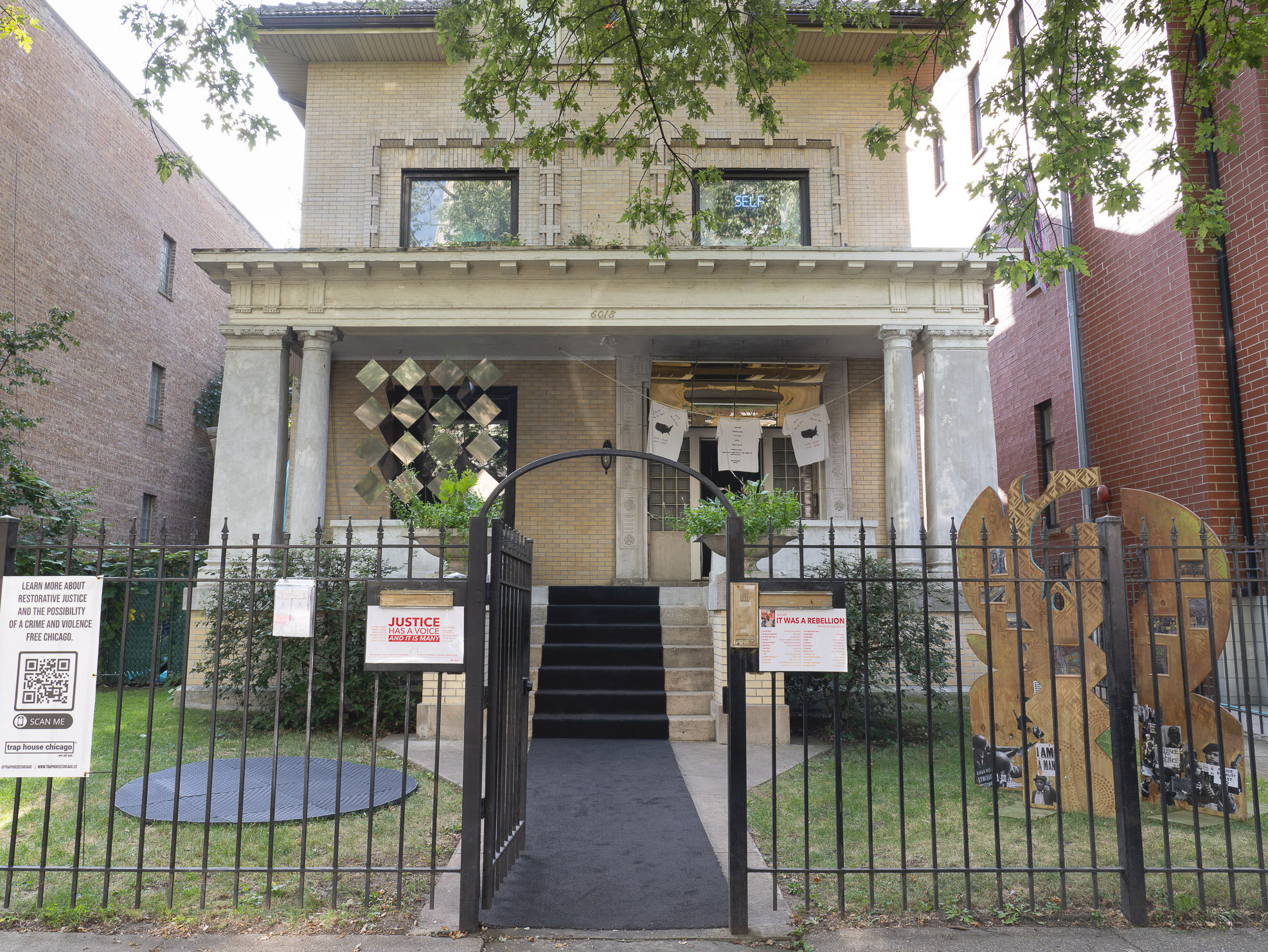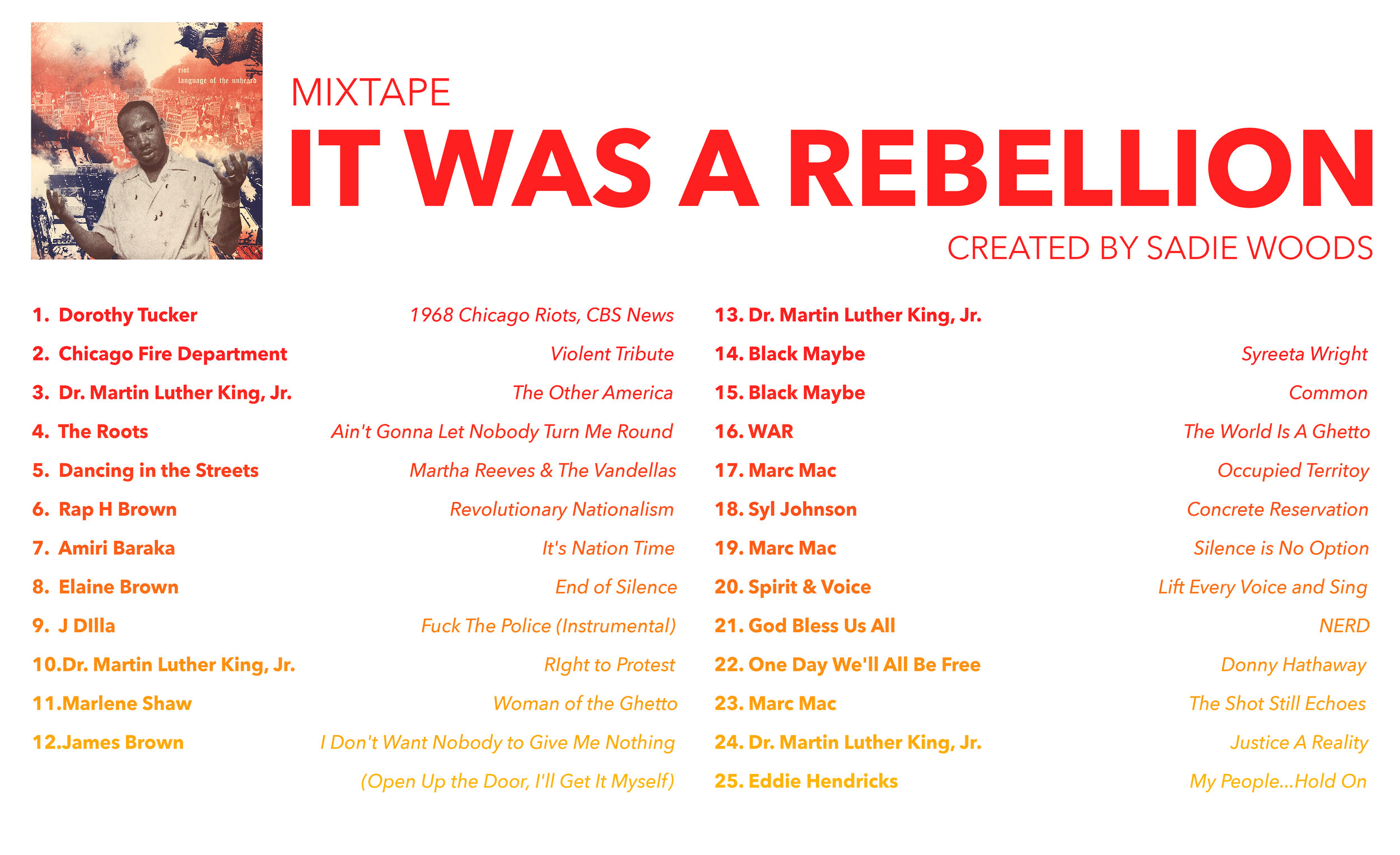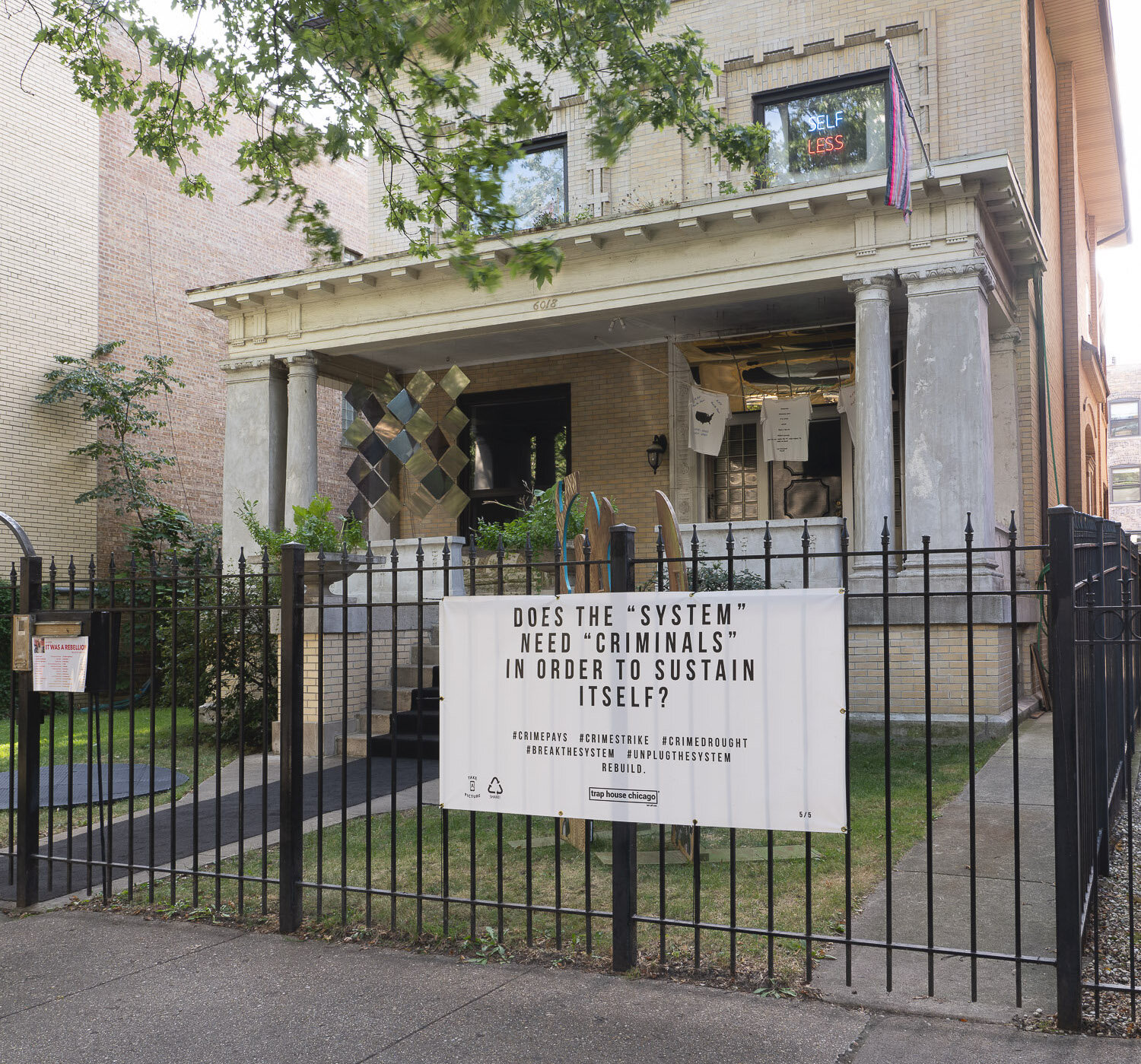Rebellion in the Front Yard
A Review of Windows to the World at 6018|North by Marina Resende Santos
Windows of the World street view, photo by Jesse Meredith
Walking by a mansion between three-flats in Chicago’s Edgewater neighborhood, I hear a beat and the words “Occupied Territory.” The track by Marc Mac is coming from the buzzer speaker, followed by Syl Johnson’s “Concrete Reservation,” and later, parts of Dr. Martin Luther King, Jr.’s speech “Justice a Reality.” There is no need to buzz the doorbell; the gate is open to wander in.
The sounds belong to Sadie Woods’s cleverly installed tracklist It Was a Rebellion, one of twelve works at Windows to the World, the exhibition currently on view on the vast front yard, façade, porch, and outer fence of 6018|North, a beautiful house curated as a gallery and programming space by Tricia Van Eck. The show, which strikes more as a playful collection of works, is a response to the COVID-19 pandemic. Curators Wisdom Baty, Ciera McKissick, Caroline K. Ng, Ji Yang, and Su Yeon Lim decided to display works outside when their Justice Hotel 2.0 program halted due to the shutdown. Windows to the World also coincided with the Floyd-Taylor protests and features, in solidarity, works rooted in Afro-American representations and protests against police brutality and racism.
While pulled from different historical times and communities, the tracks in It Was a Rebellion also reflect on this particular moment and on the very street where their sounds travel, as well as on the urban wealth built upon Zhigagoong (the indigenous name for the land of Chicago), the segregated city, and the United States at its foundation. Outdoor sonic interventions are often drowned out by the sounds of cicadas, passing cars, construction, or people talking. But Woods’s project draws attention and draws me towards the gate; it creates the atmosphere of a garden party that is missing (or waiting for) its guests. Samples from Civil Rights speeches blend well with beats mixing spoken testimonies, hip hop, and house music, music that has historically acted as a form of both joy and resistance in Black communities.
Windows of the World street view, photo by Jesse Meredith
Other works in the garden offer a spectrum of responses to the burning issues of 2020. On the exterior fence, Mashaun Hendrick’s banner goes farthest in the language of protest: “Does the system need ‘criminals’ in order to sustain itself?” Using discursive language derived directly from movements for police and prison abolition and taking the form of a banner, the work is more interested in the strategy of political protest signs than aesthetic forms. On the other end of the spectrum, Efrat Hakimi’s Time, a neon sculpture where the titular word seems to deform or melt, now evokes the distortions of time undergone during “quarantine,” or between long histories of struggle and explosive moments of insurrection. “Self/less,” by Audra Jacot, is another work deploying text and neon, where the words “SELF” and “LESS” shine separately, then together, in a wordplay that explores the contemporary tension between “selflessness” as the activist’s disposition, and the centrality of “self” in both identity politics and self-care.
Windows to the World does what is urgent for art organizations now: it finds a way to continue sharing art and supporting artists when galleries must be closed, while responding to the timely, pressing questions in civil society and believing in the stirring role of art in moments of struggle and change. Perhaps with the exception of Woods’s playlist, it is hard to hold a sense of cohesion between the works and the spaces they occupy. That is compensated, however, by the experience of discovery while walking by the show on an errand, pausing for a sound or the glimmer of neon, and, at art’s invitation, venturing into the yard and terrace of a grand house.
Marina Resende Santos is a researcher and artist based. She studied comparative literature and German at the University of Chicago and her interviews with artists have been published on THE SEEN, Sixty Inches From Center and Newcity. This review was created as a part of the 6018North Writer’s Workshop.


